
 |
||
|
Silent Member
加入日期: Jan 2017
文章: 0
|
巴基斯坦 殲-10C 擊落五架印度戰機
印巴衝突5月8日最新戰況
巴基斯坦副總理兼外長證實:使用殲-10C戰機擊落了五架印軍戰機 據巴基斯坦今日新聞電視台(Aaj TV)當地時間5月7日發布的視頻顯示,巴基斯坦副總理兼外交部長伊沙克·達爾在議會通報印巴空戰情況時聲稱,可以確認擊落了5架印度戰鬥機,全部是由殲-10C戰機取得的戰果,目前已將這個消息通過外交途徑向中國通報,並希望同中方就當前局勢保持密切溝通協調。 此外,巴副總理還聲稱:“75-80架印度戰鬥機參與了對巴基斯坦的進攻,巴基斯坦本來可以擊落其中的15架,但爲了保持克制,只擊落了其中的5架噴氣式戰機和2架無人機。” 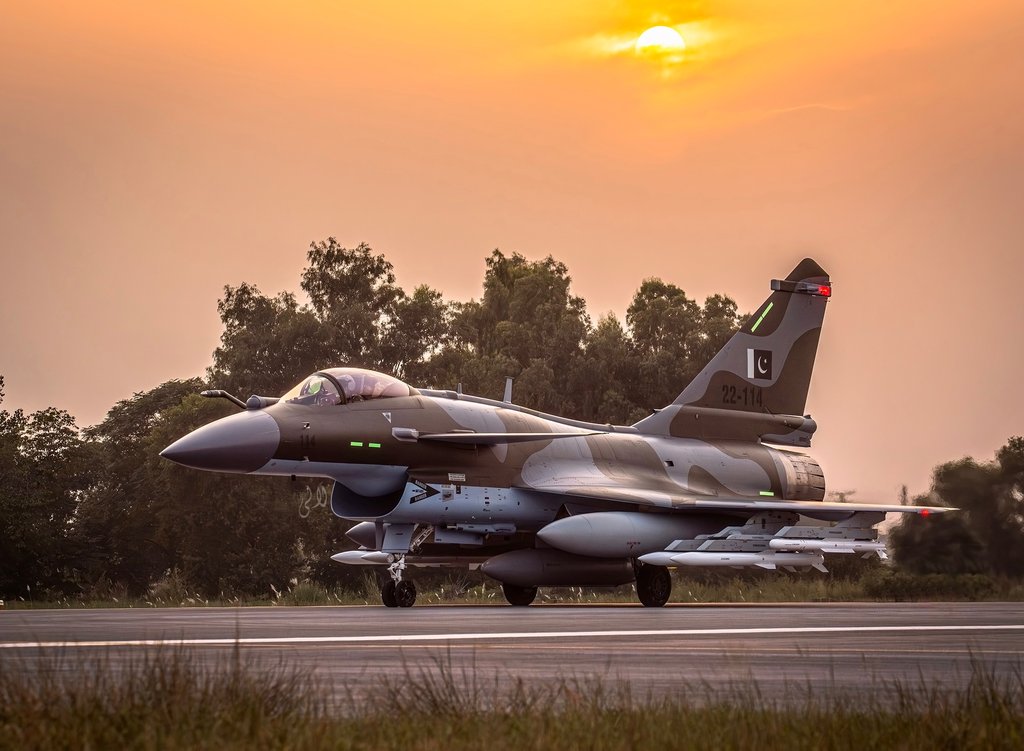 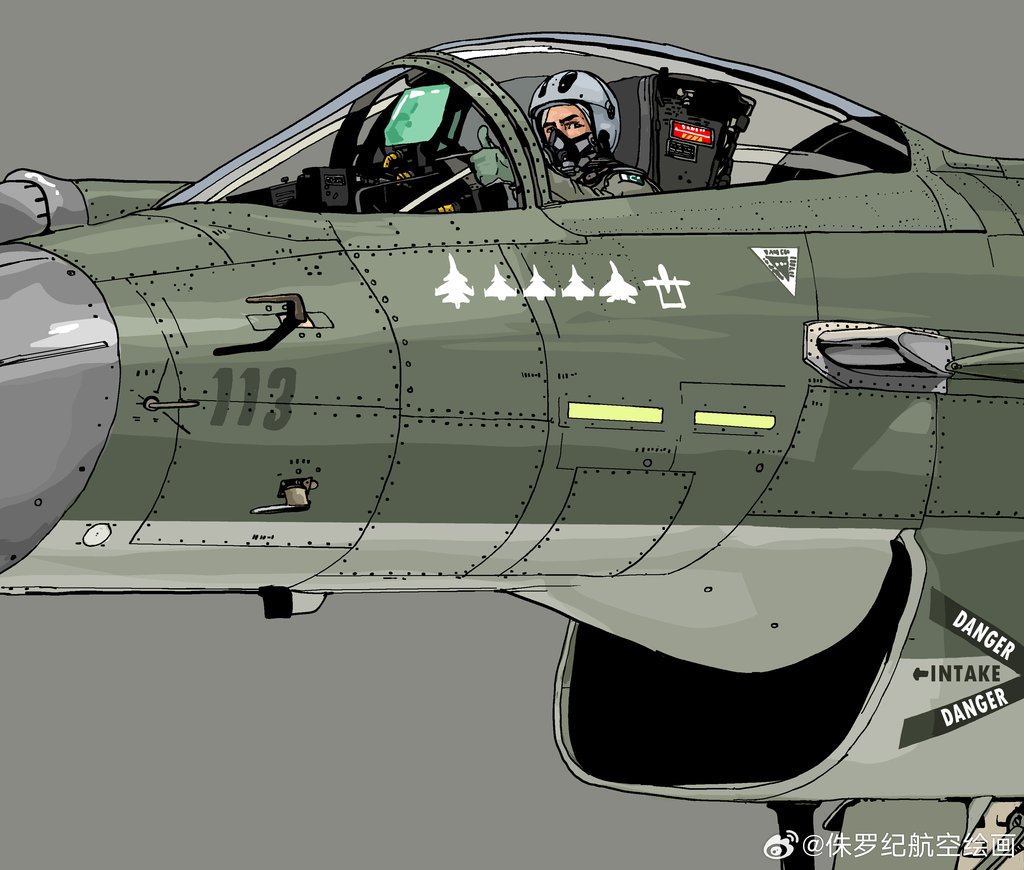 CNN:法國官員證實印度飙風戰機被擊落   路透社:美國官員確認巴基斯坦殲-10CE擊落了印度飙風戰機   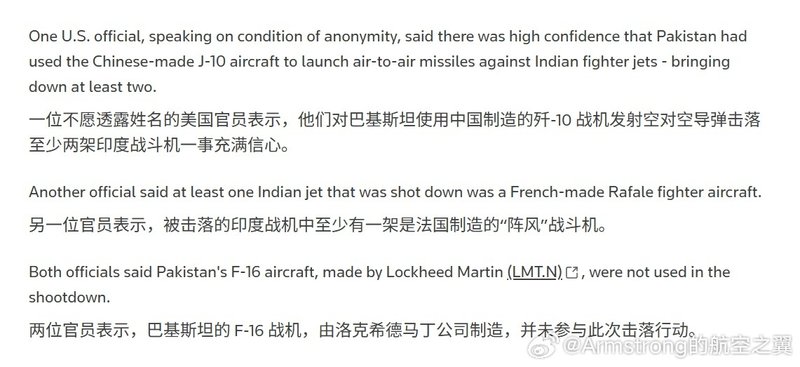 墜毀的印度飆風戰機M88發動機尾部收斂片  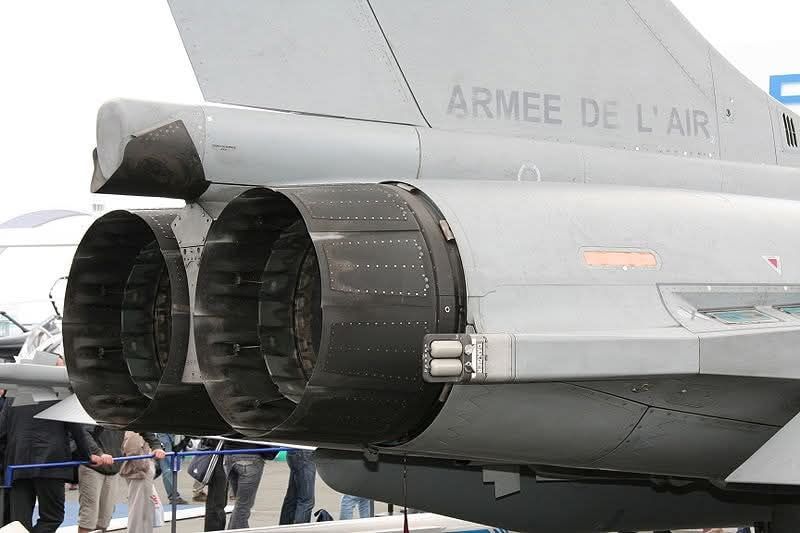 最實錘的照片出現了,印軍飆風戰鬥機尾翼殘骸露面,編號BS001 屬于第一批交付的28架單座飆風EH戰鬥機(印度編號BS 001至BS 028)   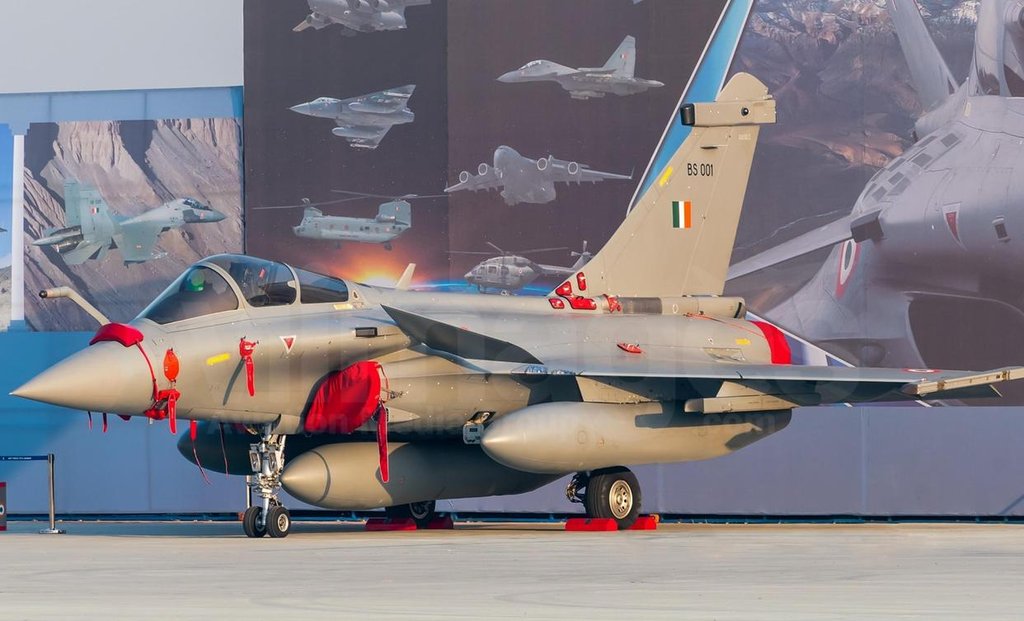  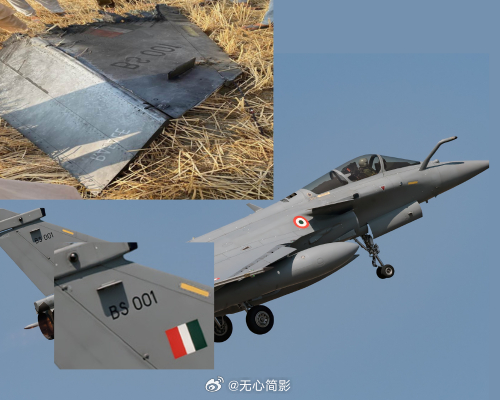 =============================================== 印巴衝突5月6日戰況 Pakistan’s J-10C stuns India’s Rafale with electronic jamming https://bulgarianmilitary.com/2025/...tronic-jamming/ Pakistan’s Defense Minister Khawaja Asif made a startling claim: four Indian Air Force Rafale fighter jets were electronically jammed on the night of April 29-30 by Pakistani forces near the Line of Control [LoC] in the disputed Kashmir region, forcing them to retreat and make emergency landings in Srinagar. According to posts on X citing Asif’s statement, the Pakistani Air Force deployed its Chinese-made Chengdu J-10C fighters, backed by advanced electronic warfare systems, to disrupt the Rafales’ radar and communication systems. 巴基斯坦國防部長哈瓦賈·阿西夫稱,4月29日至30日夜間,巴基斯坦部隊在有爭議的克什米爾地區實際控制線附近,對四架印度空軍的“飆風”戰鬥機進行了電子干擾,迫使這些戰機撤退並在斯利那加緊急降落。 據 X 平台上的帖子援引阿西夫的聲明稱,巴基斯坦空軍部署了其中國制造的成都殲 -10C 戰鬥機,並輔以先進的電子戰系統,以干擾“飆風”戰機的雷達和通信系統。         此文章於 2025-05-09 10:47 AM 被 rcack 編輯. |
|||||||
|
|
|
Major Member
 加入日期: Oct 2008
文章: 117
|
為什麼推特上說是因為受到閃電干擾?
五毛為了吹牛故意只引用部分內容,你以為別人跟你們牆內的韭菜一樣好騙嗎? https://x.com/ForumStrategic/status...onic-jamming%2F
__________________
亂台反民主塔綠斑綠共廁液神經錯亂洗板假帳號集團:jerry20530 此文章於 2025-05-06 12:53 PM 被 pcbd 編輯. |
||
|
|
|
Silent Member
加入日期: Jan 2017
文章: 0
|
引用:
Pakistan’s J-10C stuns India’s Rafale with electronic jamming https://bulgarianmilitary.com/2025/...tronic-jamming/ Pakistan’s Defense Minister Khawaja Asif made a startling claim: four Indian Air Force Rafale fighter jets were electronically jammed on the night of April 29-30 by Pakistani forces near the Line of Control [LoC] in the disputed Kashmir region, forcing them to retreat and make emergency landings in Srinagar. According to posts on X citing Asif’s statement, the Pakistani Air Force deployed its Chinese-made Chengdu J-10C fighters, backed by advanced electronic warfare systems, to disrupt the Rafales’ radar and communication systems. The alleged incident, which India has not confirmed, has sparked intense debate about the capabilities of China’s rapidly advancing military technology and its potential to challenge Western-designed systems like the French-built Rafale. While the claim remains unverified and carries the risk of being propaganda, it raises critical questions about the evolving landscape of aerial warfare and the growing sophistication of electronic countermeasures. The reported encounter occurred against a backdrop of heightened tensions between the two nuclear-armed neighbors, following a deadly terrorist attack on April 22 in Pahalgam, Kashmir, that killed 26 tourists, mostly Indian nationals. India accused Pakistan of sponsoring the attack, a charge Islamabad vehemently denied, while both sides engaged in diplomatic and military posturing, including cross-border skirmishes along the LoC. Pakistan’s state-run media, including PTV News, reported that its air force detected and chased Indian Rafale jets conducting reconnaissance near the LoC, forcing them to “retreat in panic.” Asif’s assertion, echoed by outlets like Clash Report, goes further, claiming the Rafales’ advanced systems were rendered inoperable by Pakistan’s electronic warfare capabilities, a feat that, if true, would mark a significant technological achievement for Pakistan and its Chinese-supplied arsenal. The Chengdu J-10C, at the heart of Pakistan’s claim, is a single-engine, multirole fighter developed by China’s Chengdu Aerospace Corporation. Introduced to the Pakistani Air Force in March 2022, the J-10C represents a cornerstone of Pakistan’s efforts to modernize its fleet in response to India’s acquisition of 36 Rafale jets from France. Powered by a Chinese WS-10B turbofan engine, the J-10C can reach speeds of Mach 1.8 and has an operational range of approximately 1,250 miles with external fuel tanks. Its active electronically scanned array [AESA] radar, believed to be a variant of the KLJ-10, provides enhanced target detection and tracking capabilities. The aircraft is armed with a mix of air-to-air and air-to-ground munitions, including the long-range PL-15 missile, which boasts a range exceeding 120 miles, and the PL-10, a short-range missile with advanced infrared homing. Pakistan’s acquisition of at least 25 J-10C fighters, announced in December 2021, was explicitly framed as a counter to India’s Rafale program, underscoring the strategic rivalry driving technological advancements in the region. What sets the J-10C apart in this context is its reported integration of advanced electronic warfare systems, which Asif claims were used to disrupt the Rafale jets. While specific details about the J-10C’s electronic warfare suite are scarce due to China’s secretive approach to military technology, defense analysts suggest it may incorporate systems similar to the KG300G or KG600, Chinese-developed jammers capable of interfering with enemy radar and communication systems. These systems could employ digital radio frequency memory [DRFM] techniques, which allow them to record and manipulate incoming radar signals, creating false targets or overwhelming an opponent’s sensors. Such capabilities would be critical in countering the Rafale’s sophisticated defenses, particularly its SPECTRA electronic warfare system, which is designed to protect the aircraft from a wide range of threats. The Dassault Rafale, operated by the Indian Air Force since 2020, is a twin-engine, multirole fighter renowned for its versatility and cutting-edge technology. Powered by two Snecma M88-2 engines, the Rafale achieves a top speed of Mach 1.8 and an operational range of about 2,300 miles. Its Thales RBE2 AESA radar offers superior situational awareness, enabling it to track multiple targets simultaneously across long distances. The Rafale’s arsenal includes the Meteor beyond-visual-range air-to-air missile, with a range exceeding 90 miles, and the MICA missile for close-range engagements. India’s Rafale jets, based at Ambala and Hasimara air bases, are equipped with India-specific enhancements, including helmet-mounted displays and the ability to carry the BrahMos supersonic cruise missile, a joint Indo-Russian weapon designed for precision strikes. The aircraft’s integration into India’s network-centric warfare systems further enhances its combat effectiveness, allowing it to share data with other platforms in real-time. Central to the Rafale’s survivability is its SPECTRA system, developed by Thales and MBDA. SPECTRA, which stands for Système de Protection et d’Évitement des Conduites de Tir du Rafale, is a comprehensive electronic warfare suite that combines active and passive sensors, jammers, and decoy dispensers to detect, analyze, and neutralize threats. The system uses advanced algorithms to identify incoming radar and missile signals, deploying countermeasures such as chaff, flares, or directed jamming to confuse enemy sensors. SPECTRA’s active cancellation technology, a closely guarded feature, is believed to generate tailored electromagnetic signals that mask the Rafale’s radar signature, making it harder to detect. This system has been praised for its ability to counter sophisticated threats, including Russian and Chinese radar systems, and is considered one of the most advanced electronic warfare suites on any fighter jet today. Pakistan’s claim that its J-10C fighters disrupted SPECTRA is extraordinary, as it suggests a level of technological prowess that challenges Rafale’s reputation as a near-invulnerable platform. Electronic warfare involves the use of electromagnetic signals to degrade an opponent’s sensors, communications, or navigation systems, often through jamming or deception. For Pakistan to have successfully jammed the Rafale, its forces would have needed to overpower or outsmart SPECTRA’s countermeasures, a task requiring precise coordination and advanced equipment. While the J-10C’s onboard jammers could play a role, experts speculate that Pakistan may have employed ground-based electronic warfare systems, such as Chinese-supplied units, to augment its airborne capabilities. These systems could emit high-powered signals to saturate the Rafale’s sensors, potentially causing temporary disruptions in radar and communication functions. The plausibility of Pakistan’s claim hinges on several factors. The J-10C, while advanced, is a relatively new platform with limited combat experience compared to the Rafale, which has seen action in conflicts in Libya, Mali, and Syria. China’s investment in electronic warfare has grown significantly in recent years, driven by its ambition to close the technological gap with Western powers. Systems like the KG600, used on other Chinese aircraft, are designed to jam radar frequencies across a wide spectrum, potentially affecting AESA radars like the Rafale’s RBE2. However, overcoming SPECTRA’s adaptive jamming and active cancellation features would require a highly sophisticated and targeted approach, possibly involving real-time signal analysis and overwhelming power output. Without independent verification, such as satellite imagery or intercepted communications, the claim remains speculative, and India’s silence on the matter suggests either a strategic decision to avoid escalation or an acknowledgment of a minor operational setback. The incident, if true, would not be the first time electronic warfare has played a decisive role in modern aerial engagements. During the 2019 Balakot airstrike, India’s Mirage 2000 jets reportedly used electronic countermeasures to evade Pakistani radar, while Pakistan’s F-16s and JF-17s engaged in a dogfight that resulted in the downing of an Indian MiG-21. Electronic warfare has become a critical domain in military strategy, with nations like the United States, Russia, and China investing heavily in systems to dominate the electromagnetic spectrum. The U.S. Navy’s EA-18G Growler, for example, is a dedicated electronic warfare aircraft equipped with the ALQ-249 Next Generation Jammer, capable of disrupting enemy radar and communications across vast distances. Russia’s Su-35 fighters, meanwhile, use the Khibiny electronic warfare pod to create protective jamming bubbles around aircraft. China’s advancements, as potentially demonstrated by the J-10C, suggest it is catching up, leveraging its growing industrial base to produce cost-effective systems that challenge more expensive Western platforms. Historically, India and Pakistan have used air forces as key instruments of power projection along the LoC. The 1999 Kargil War saw limited but intense aerial engagements, with India’s MiG-29s and Mirage 2000s conducting strikes against Pakistani positions. Pakistan’s F-16s, acquired from the United States in the 1980s, have long been a mainstay of its air force, but the introduction of the J-10C in 2022 marked a shift toward reliance on Chinese technology. This shift reflects broader geopolitical trends, with Pakistan deepening its military ties with China through initiatives like the Belt and Road Initiative. The J-10C’s deployment in Pakistan serves as a testing ground for Chinese hardware, providing valuable data on its performance against advanced adversaries like the Rafale. For India, the Rafale acquisition was a strategic move to counter both Pakistan and China, whose J-20 stealth fighters pose a long-term threat along the Line of Actual Control in Ladakh. The broader context of the April 29-30 incident underscores the volatile dynamics in Kashmir. The Pahalgam attack, claimed by The Resistance Front, a group India links to Pakistan-based Lashkar-e-Taiba, prompted a series of retaliatory measures, including India’s suspension of the Indus Waters Treaty and closure of its airspace to Pakistani flights. Pakistan responded with reciprocal measures, escalating the diplomatic crisis. Cross-border firing along the LoC, reported on multiple occasions in late April, further heightened tensions, with both sides accusing each other of ceasefire violations. The alleged Rafale incident, whether factual or exaggerated, fits into a pattern of psychological and informational warfare, where claims of technological superiority serve to bolster domestic morale and deter adversaries. Skepticism about Asif’s claim is warranted, given the history of unverified assertions in India-Pakistan conflicts. In 2019, Pakistan claimed to have shot down an Indian Su-30MKI during the Balakot skirmish, a claim debunked by India, which confirmed the loss of only a MiG-21. Similarly, social media posts in late April 2025 falsely claimed a Rafale was shot down near the LoC, using footage from an unrelated Su-30MKI crash in Maharashtra in June 2024. The Press Information Bureau’s Fact Check unit swiftly dismissed these reports, highlighting the prevalence of misinformation in the region. Asif’s statement, amplified by platforms like X, may serve a similar purpose, projecting strength to domestic and international audiences while pressuring India to de-escalate. For the United States, the incident holds implications beyond South Asia. China’s growing ability to produce competitive military systems, as evidenced by the J-10C, challenges the dominance of Western defense industries, which supply platforms like the F-35 and Rafale to allies worldwide. The U.S., which operates over 450 F-35 stealth fighters, relies on advanced electronic warfare capabilities to maintain air superiority. The EA-18G Growler and the F-35’s AN/ASQ-239 Barracuda system are designed to counter threats like those posed by Chinese jammers, but the rapid proliferation of such technology to nations like Pakistan raises concerns about the global balance of power. Moreover, Pakistan’s use of Chinese systems could influence other nations, particularly in the Middle East and Africa, to consider Chinese arms over Western alternatives, impacting U.S. defense exports. The lack of independent evidence makes it difficult to assess the veracity of Pakistan’s claim, but its implications are undeniable. If the J-10C did disrupt Rafale’s systems, it would signal a leap forward for Chinese aerospace technology, potentially reshaping perceptions of its reliability and effectiveness. Even if the claim is exaggerated, it serves as a reminder of the growing importance of electronic warfare in modern conflicts, where control of the electromagnetic spectrum can be as decisive as traditional firepower. The incident also highlights the challenges of verifying claims in an era of rapid information dissemination, where social media platforms like X can amplify unconfirmed reports, shaping narratives before facts are established. As tensions in Kashmir persist, the alleged Rafale incident underscores the need for robust electronic warfare defenses across military platforms. For India, it may prompt a reassessment of the Rafale’s operational protocols and maintenance standards, ensuring its systems are resilient against emerging threats. For Pakistan, the J-10C’s reported success, whether real or fabricated, bolsters its strategic partnership with China, reinforcing its role as a key ally in Beijing’s geopolitical ambitions. For the global defense community, the incident serves as a wake-up call: the gap between Western and Chinese military technology is narrowing, and future conflicts may hinge on the ability to dominate the invisible battlefield of electronic warfare. Could this be a turning point in the race for aerial supremacy, or is it merely another chapter in the long history of unverified claims between India and Pakistan? Only time, and perhaps declassified records, will tell. |
|
|
|
|
Major Member
 加入日期: Oct 2008
文章: 117
|
https://x.com/ForumStrategic/status...onic-jamming%2F
Well yes, Rafale was jammed for 4x minutes [Jamming via Platform Unspecified], Rafale failed to return to home base due to jamming, & lastly it wasn't J-10C which deterred the Rafale, it was ⚡. same source from your quote that you untold 五毛,講重點,別一堆廢話,不敢回應就貼一大堆英文是想唬誰?
__________________
亂台反民主塔綠斑綠共廁液神經錯亂洗板假帳號集團:jerry20530 此文章於 2025-05-06 01:34 PM 被 pcbd 編輯. |
|
|
|
Golden Member
    加入日期: Apr 2017 您的住址: 陣亡者的靈堂
文章: 3,180
|
引用:
那要怎麼證明你引用的來源是正確的?  沒真的開火 不就是各說各話而已 洋洋灑灑一大篇也不重要 因為雙方可能都沒說實話 牆外的謊話很多、非常多 一樣要學會辨別 但從後續的人員調動 誰嘉獎、升職或加薪 誰被貶職 大概可以看出這次對陣中哪一方吃虧  貶職可能跟武器也無關 是人為應對、決策失誤
__________________

此文章於 2025-05-06 02:10 PM 被 healthfirst. 編輯. |
|
|
|
|
New Member
加入日期: Feb 2014
文章: 3
|
怎麼有人又破防了
 中國如今電子戰水準超強的 已非昔日吳下阿蒙 連老美的EA-18G都被J-15D吊虐過 上次美國卡爾文森號航母第136電子戰中隊的EA-18G在南海挑釁 結果被中國J-15D全面壓制騎臉輸出吊虐 這次慘敗導致卡爾文森號航母電戰指揮官被撤職 還有最近羅斯福號航母第115空中預警與指揮中隊的電戰指揮官也因被J-15D戲耍後被撤職了 |
|
|
|
Regular Member
  加入日期: Jan 2008
文章: 84
|
結果擊落數=0.
戰績0. 還有什麼能說? |
|
|
|
Elite Member
     加入日期: Oct 2002
文章: 4,800
|
__________________
人性的醜陋就是,會在無權、無勢、善良的人身上挑毛病,卻在有權、有勢、缺德的人身上找優點。當無權、無勢、善良的人受到傷害的時候,還會站在所謂的道德制高點上,假惺惺地勸說無權、無勢、善良的人,一定要忍耐,一定要大度。 |
|
|
|
New Member
加入日期: Dec 2012
文章: 7
|
這有什麽好驚訝的...
去年巴基斯坦的J10C在聯合演習中對戰卡達的EF2000颱風戰鬥機也是 9:0 全面碾壓獲勝... with dogfights 近距狗鬥 4:0 Beyond Visual Range 視距外打擊 5:0 |
|
|
|
New Member
加入日期: Dec 2012
文章: 7
|
引用:
我找到的資料J15D 2018年就上艦了... 殲-15D于2018 年開始進行作戰測試。其在航母上的部署使中國成為第二個擁有專門艦載電子戰飛機的國家。 在2022年3月官方發布的山東艦訓練視頻中,首次出現了“飛鲨”電子戰型號殲-15D In addition, a J-15D, the electronic attack variant of the “Flying Shark”, was seen for the first time on board the Shandong in official publicity footage of the carrier’s training in March. With some armaments removed and replaced with electronic warfare pods and other electronic equipment, the J-15D is designed to detect, track, interfere and suppress enemy radar and other electronic communication, to provide protection for the ship-borne fighter fleets. J-15D began operational tests in 2018. Its deployment on the carrier made China the second country to have specialised ship-based electronic warfare planes. https://thedefencetimes.com/2022/07...-chinese-media/ |
|
|
|